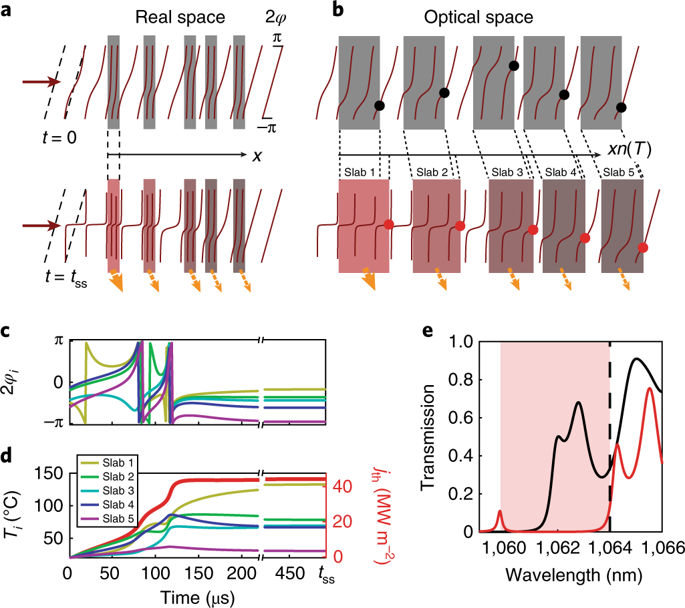Nature Photonics ( IF 35.0 ) Pub Date : 2018-10-29 , DOI: 10.1038/s41566-018-0278-1 Chad Ropp , Nicolas Bachelard , David Barth , Yuan Wang , Xiang Zhang

|
The complex behaviours of schools of fish1 and swarms of bacteria2,3 can be emulated in soft-matter systems that assemble into flocks4,5 and active nematics6, respectively. These artificial structures emerge far from thermodynamic equilibrium through the process of dissipative self-organization, in which many-body interactions coordinate energy dissipation. The development of such active matter has deepened our understanding of living systems. Yet, the application of dissipative self-organization has been restricted to soft-matter systems, whose elements organize through their respective motions. Here, we demonstrate dissipative self-organization in solid-state photonics. Our structure consists of a random array of Fabry–Pérot resonators that are externally driven and interact coherently through thermo-optical feedback. At sufficient optical driving power, the system undergoes a phase transition into a robustly organized non-equilibrium state that actively partitions energy dissipation, while displaying resiliency to perturbations and collective memory7,8. Self-organizing photonics opens possibilities for developing scalable architectures and life-like networks for brain-inspired computation9,10.
中文翻译:

光学空间中的耗散自组织
鱼群1和细菌群2,3的复杂行为可以在软物质系统中模拟,这些系统组装成鸡群4,5和活性向列相6, 分别。这些人工结构通过耗散自组织过程从热力学平衡中脱颖而出,在耗散自组织过程中,多体相互作用协调了能量耗散。这种活性物质的发展加深了我们对生命系统的理解。然而,耗散自组织的应用仅限于软物质系统,其元素通过各自的运动进行组织。在这里,我们展示了固态光子学中的耗散自组织。我们的结构由随机驱动的Fabry-Pérot谐振器阵列组成,这些谐振器由外部驱动,并通过热光反馈相干地相互作用。在足够的光驱动功率下,系统会经历相变,转变为牢固组织的非平衡状态,该状态会主动分配能量耗散,7,8。自组织光子学为开发可扩展的体系结构和逼真的网络提供了可能性,以实现大脑灵感的计算9,10。



























 京公网安备 11010802027423号
京公网安备 11010802027423号